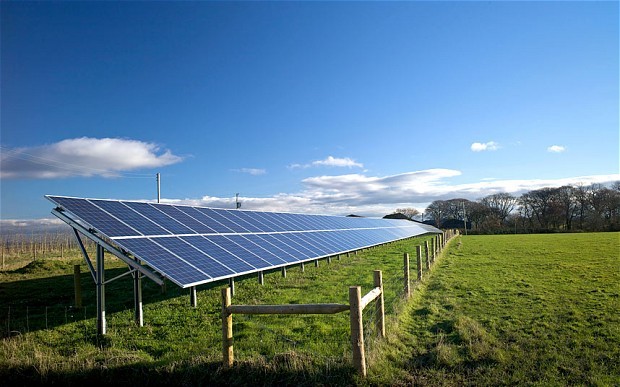Farming Energy
DECEMBER 3, 2013 CAMILLE
Imagine generating renewable energy and yielding crops simultaneously. This multitasking miracle has been achieved recently in Japan, where “Solar Sharing” gained a foothold after the Ministry of Agriculture, Forestry and Fisheries lifted the ban on PV solar system installations on agricultural lands.
The concept was developed in 2004 by Japanese agricultural machinery engineer Akira Nagashima, after he discovered a crucial photosynthetic clue. Nagashima noted that plants have a light saturation point at which increased amounts of sunlight does not aid the plant’s photosynthesis process, giving agricultural lands somewhat of a surplus of unused sunlight.
To exploit this surplus, He created an easily portable PV to take advantage of the dual productivity of farming lands. Restrictions exist, however; it is explicitly specified that the generation of solar power can detract no more than 20% of the crop cultivation due to PV installation. Subsequently, farmers must submit annual reports to show that their shared land cultivation does not drop below a rate of 80%. The PV system that Nagashima created is remarkably sturdy: it has weathered earthquakes and winds even without concrete footings.
The Japanese hope that “solar sharing can re-activate the declining farming sector,” which has taken a hit due to low farming revenues and an aging farming population. Combining solar and crop production is expected to coax more workers into farming, especially younger family members or those who wish to move back to the countryside.
Remarkably, Japan could be run on 7 million acres of solar shared farmland- and it currently has over 11 million acres available for dual production. This is enormous for the Japanese, who are still scrambling to recover from the losses obtained from the Tokyo Electric Power Company’s Daiichi power plant nuclear crisis. Yet they note that substantial benefits for the United States could be gleaned from the technology, as well. Farms raising livestock could use the PV systems to provide shade for the animals and for grassy grazing lands, minimizing irrigation efforts and costs. The United States also is home to 914 million acres of farmland, despite an 8% decline in the past twenty years. It seems that these amber waves of grain have a bit more to yield than just wheat.
The adoption of solar sharing, both in Japan and in the United States, could have enormous impacts on national and global consumption of renewable energy, and on revitalizing a declining sector that was once wholly reliant on sunlight.


